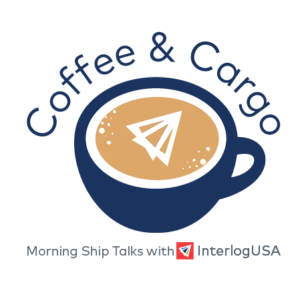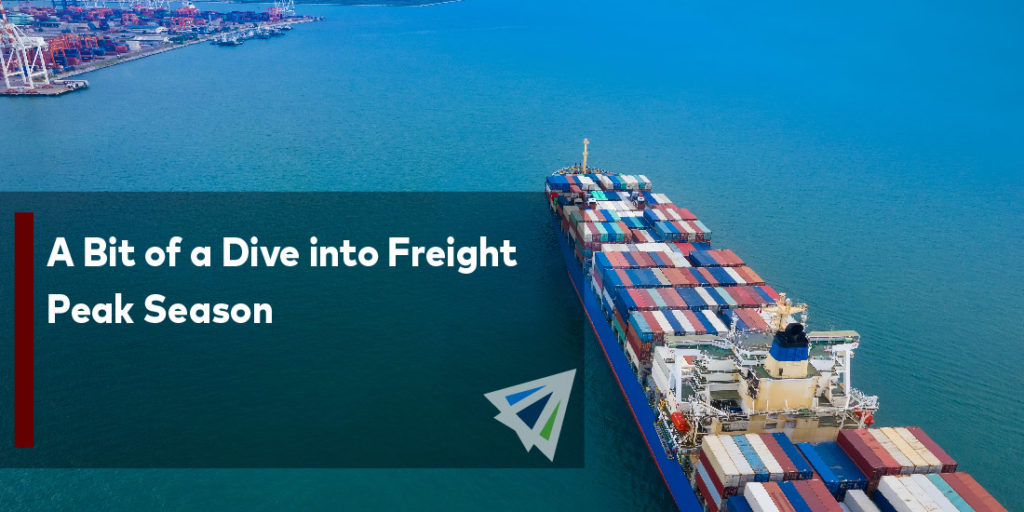Competitive Edge
July 13th, 2022
Stay Current with Interlog’s Weekly Newsletter:

Headlines
- Asian imports to U.S. West Coast ports saw a steady gain in on-time performance, rising to 21.9 percent in May from 21 percent in April, according to the Journal of Commerce. On the other hand, U.S. East Coast ports have dealt with increased anchorage of vessels over the past few months as many anxious shippers shifted their cargo away from the West Coast fearing potential disruptions from ongoing labor talks.
- Data reported by FreightWaves reveals there are 125 container ships waiting off North American ports (as of last Friday, July 8). Relative to last year, this total number marks an overall improvement. While Los Angeles and Long Beach ports were the posterchildren of ship queues last year, the Port of Savannah is now the epicenter of backlogged vessels with the largest queue in North America.
UPDATE: U.S./Canada Ports – Number of Vessels at Anchor as of 07-12-22
- Savannah: 40 Vessels at Anchor (+1)
- Houston: 37 Vessels at Anchor (+2)
- Vancouver: 20 Vessels at Anchor (0)
- New York/Newark: 16 Vessels at Anchor (-5)
- San Francisco/Oakland: 9 Vessels at Anchor (-2)
- Los Angeles/Long Beach: 7 Vessels at Anchor (-4)
- Charleston: 2 Vessels at Anchor (+1)
Note: This does not include vessels moored and being unloaded at port docks.
Courtesy: MarineTraffic
IMPORT: Asia to North America (TPEB)
Recent Developments:
- With Shanghai open from Covid-related restrictions for over a month, production at factories has gradually picked up. Insiders forecast improved flows of import volumes into July. Subsequent concerns follow of how this will pressure operations and raise freight rates.
- Contract negotiations between the International Longshore and Warehouse Union (ILWU) and Pacific Maritime Association (PMA) remain active. The existing labor contract between the two parties expired July 1.
- Both the ILWU and PMA have commented neither is planning on striking or shutting down operations amid ongoing talks. The two parties state their confidence that there will be no disruptions at USWC ports.
Rates: Rates remain relatively softened, however with a forecasted boom in import activity approaching, shippers can expect increases.
Space: Space is generally open for now, but any surges in demand and volumes will tighten space.
Capacity: Capacity has tightened in pockets. A certain trend of shippers shifting to the USEC has developed due to uncertainty around West Coast (ILWU and PMA) labor talks.
Equipment: Intermodal systems remain stressed with congestion and truck and chassis deficits.
TIPS: Book at least 2-3 weeks prior to ready date. Strongly consider premium services and, if cargo is ready now, make plans to move as soon as possible with the current openings in space and fallen rates.
IMPORT: Europe to North America (TAWB)
Recent Developments:
- Northern European hubs, primarily German and Netherland ports, are experiencing critical congestion due to labor slowdowns and strikes.
- USWC ports have seen alleviated congestion and improvements to vessel waiting times. There are no considerable disruptions directly related to ongoing WC labor talks.
- On the USEC, both ports of New York/Newark and Savannah have substantial numbers of anchored vessels offshore.
- Higher conversions to air freight among American importers as challenges continue for ocean freight.
Rates: Rates remain elevated for July. Equipment shortages are leading to new GRIs for some Mediterranean origins. Higher fuel costs are also contributing to rate increases.
Space: Space remains critical for USEC and USWC. However, there have been glimpses of improvements on both ends.
Capacity: Capacity for both North Europe and Mediterranean services remain gripped. Container line MSC has launched a loop NWC to Mexico Express (North Europe to U.S. Gulf) at the end of June. This new loop will turn in six weeks calling: European ports of Antwerp (NL), Altamira (ES), and Bremerhaven (DE); the Bahamian port of Freeport; and the Mexican port of Veracruz.
Equipment: Equipment at European seaports is not as readily available as it has been for the past few months. Inland terminals in Europe are also still reporting equipment shortages. On the U.S. side, truck and chassis availability remain concerning, especially with the latter.
TIPS: Book 5 or more weeks prior to ready date. Shippers are strongly advised to use premium service for no-roll options and improved reliability for their cargo.
EXPORT: North America to Asia
Recent Developments:
- For the USEC, waiting vessels remain an issue for Savannah and New York/Newark.
- Diminished schedule integrity continues to challenge post earliest return dates.
- Vessel arrivals remain smooth for USWC POLs.
Rates: Some carriers have issued limited GRIs for July.
Capacity: Available capacity remains fluid for USWC POLs.
Equipment: Truck, container, and chassis availability remain causes for concern and has significantly contributed to congestion of the intermodal system and IPI origins. Standard equipment at ports remains available unless carriers advise otherwise.
- Some carriers have noted rail operations from Chicago to USWC ports have become more fluid and can handle an uptick in volume.
TIPS: Book 4 to 5 weeks prior to time of departure to secure necessary equipment and vessel space.
Did You Know: The Port of Houston sees their busiest month in the Port’s history
The Port handled 21.6 million tons of container and general cargo in their terminals through May and was 20% higher through May.
The Port also notes the availability of their truck gates on Saturdays as part of their success at the container terminals.
Source: Container News
Freight News
Updates on air freight: volumes/rates/demands/what things look like entering July
There has been a slight decline in the amount of global air shipments, recently in part to slower economic growth and seasonal patterns. However, many suggest supply-demand picture is more trade-lane specific, especially on the trans-Atlantic lane, where they are facing overall shortages of space.
The trans-Atlantic lane has also been seeing more passenger travel through Europe and North America, which has in turn injected belly cargo capacity back into the market and dragging down rate levels, the Journal of Commerce reports. They also note that belly space is good news for air cargo shippers that have experience little rest from elevated rate levels for the past couple of years.
Last Thursday, the International Air Transport Association reported that cargo volume decreased by 8.3% in May, compared to 2021 where it was stronger than most expected.
As July has approached, mixed signals remain for air freight, but things vary by location. The Europe to North America route continues to remain strong, as the Asia to North America market has seen a decline in volumes, the JOC notes. Additionally, optimism remains for air freight as ocean shipping continues to have their fair share of congestion and labor shortages/unrest at USWC ports, plus the need for inventories to catch up after the COVID lockdowns a couple months prior.
Overcrowded warehouse capacity is tied to U.S. intermodal performance
U.S. intermodal performance this year has seen its fair share of challenges, and lack of warehouse capacity certainly does not make it easier to combat. Now, chassis providers, intermodal providers, and western U.S. railroads are all leaning on shippers to find a solution for the overcrowded warehouses – the Journal of Commerce notes.
One of the issues in the overcrowding of warehouse capacity is when containers are left in terminals or cargo is sitting idle on chassis, which results in trains that are destinated for a particular city, let’s say Chicago, to sit and bunch up between California and Illinois – which BNSF notes is comparable to a traffic jam on a highway. Some of the reasons for the chassis to sit twice as long and for important containers to be sitting in terminals is people either have too much delivery or the wrong inventory that is taking up space in their warehouses.
Furthermore, the Association of American Railroads (AAR) noted that intermodal train speeds fell 2.6 percent year-over-year through the first half, to 24.4 miles per hour.
The railroads do acknowledge their own part in this as they continue to not have enough engineers, crane operators, hostler drivers, and other train crew in certain cities to handle these volumes, the JOC says.
Sign up for next week's webinar!

Make sure to join us Wednesday, July 20th at 10am Central where Andrew Danas, partner at Grove, Jaskiewicz and Cobert, LLP., will be joining!
It’s a webinar you won’t want to miss as we will be discussing volume commitments, rate volatility, demurrage and detention charges and other relevant topics currently happening in the freight world.
Sign up to secure your spot now!
Sign up for our
industry answers
Our team works to provide valuable, unique, and relevant content to assist you in finding solutions. Sign up now.
